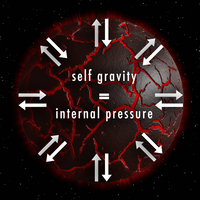Hydrostatic equilibrium

Imagine you have a big bowl of water. If you put your hand in the bowl and push down on the water, you can feel the weight of the water pushing back up against your hand. This is kind of like how gravity pulls everything down towards the center of the Earth.
Now, imagine you have a gigantic ball of gas, like a star. All of the gas in the star is being pulled towards the center by its own gravity. But because the gas is always moving around and colliding with other particles, the gas is also pushing outwards.
Hydrostatic equilibrium is when the inward pull of gravity and the outward push of the gas exactly balance out. This means that the gas in the star is neither collapsing inwards nor exploding outwards, but is staying the same size.
It's kind of like a tug-of-war between two equally strong teams. No one is winning, so the rope (or the star) is staying in place. In the case of the star, this balance is what allows it to produce energy, as the high pressure and temperature of the gas in the core causes nuclear fusion to occur.
If something disrupts this balance, like if the star runs out of fuel to fuse or it gets hit by a planet, it can cause the star to collapse or explode.
Now, imagine you have a gigantic ball of gas, like a star. All of the gas in the star is being pulled towards the center by its own gravity. But because the gas is always moving around and colliding with other particles, the gas is also pushing outwards.
Hydrostatic equilibrium is when the inward pull of gravity and the outward push of the gas exactly balance out. This means that the gas in the star is neither collapsing inwards nor exploding outwards, but is staying the same size.
It's kind of like a tug-of-war between two equally strong teams. No one is winning, so the rope (or the star) is staying in place. In the case of the star, this balance is what allows it to produce energy, as the high pressure and temperature of the gas in the core causes nuclear fusion to occur.
If something disrupts this balance, like if the star runs out of fuel to fuse or it gets hit by a planet, it can cause the star to collapse or explode.
Related topics others have asked about:
